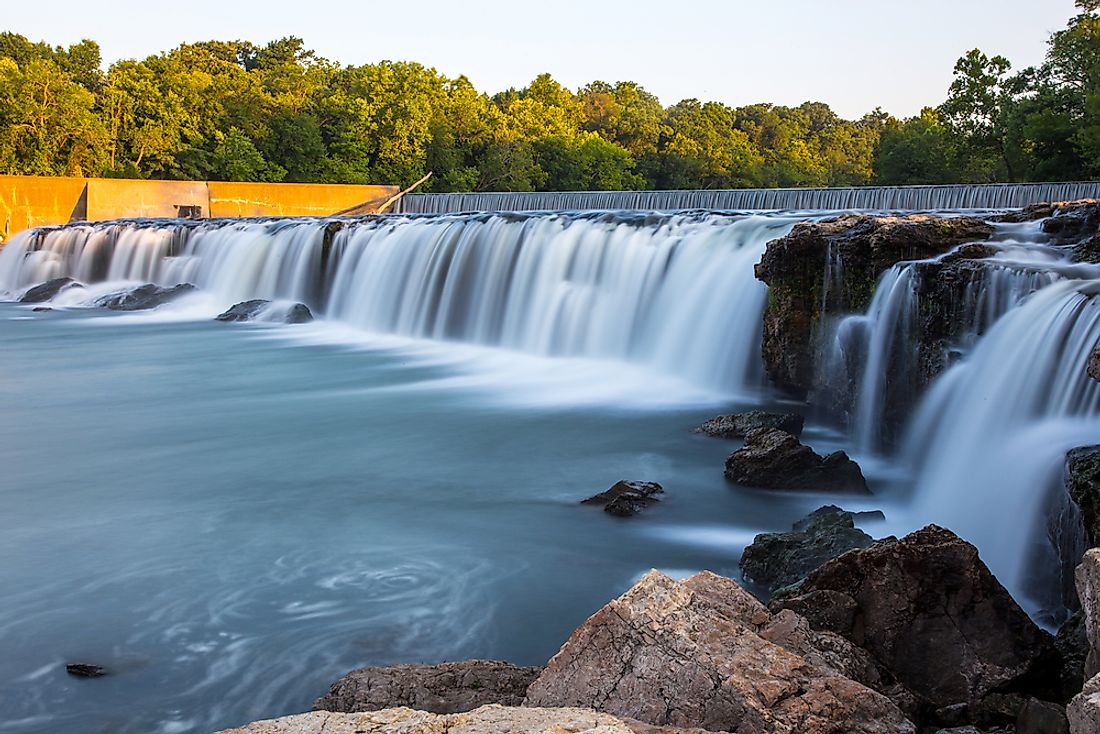10 Beautiful Places in Missouri

From the beautiful Ozark Mountains to interesting caverns to the glorious Missouri and Mississippi rivers, Missouri is a Midwestern paradise. It was where the investigation of the Wild West began, and many dreams were satisfied or wrecked. Missouri is pure American beauty, and although it proved a challenge, we have narrowed down the ten most naturally beautiful places in the state.
10. Grand Falls

As the biggest, constantly streaming waterfall in Missouri, Grand Falls dives 12 feet down a 163-foot-wide edge of strong chert before floating southward in peace. It is situated on Shoal Creek, only south of Joplin. Amid times of high water, the stature of the falls is around 25 feet, with water diving to a definite edge before streaming southward. Over the falls is an artificial dam, introduced to frame a repository that provides water to Joplin inhabitants.
9. Ha Ha Tonka State Park

Ha Tonka State Park offers an interesting progression of trails and promenades, with views that are unparalleled elsewhere in the state or in America as a whole. The best time to visit the park is in Spring, when the weather is pleasant yet still mild.
8. Gothic Water Intakes

These Gothic water admissions were constructed in 1894 are still being used. These structures fill in with water from the Chain of Rocks Water Treatment Facility, which opened in 1894 and is still in operation. Incredibly scenic views of the St. Louis horizon and the Mississippi River can be seen from these unique little towers.
7. Sandy Creek Covered Bridge

The Sandy Creek Covered Bridge was one of six scaffolds built in 1872 to permit movement from the Jefferson County seat of Hillsboro to St. Louis. Today, it is publicly owned property and a rare example of a "Howe truss" bridge, a special design of covered bridges that originated in Massachusetts.
6. Table Rock Lake

This magnificent man-made lake is found in the southwestern part of the state. It draws its water from the White river and the resulting Table Rock Dam. It is a beautiful site. The construction of the lake began in 1954 and was completed in 1958 by the help of the U.S army corps.
5. Missouri Botanical Garden

Established in 1859, the Missouri Botanical Garden is one of the most seasoned plant foundations in the United States and also a major historical landmark. The Garden is an important place for plant study and scientific research of worldwide acclaim, and also a desert spring in the city of St. Louis. With about 80 acres of land (32 ha) of agricultural show, it includes a 5.7 ha Japanese walking garden named Seiwa, as well as the the Climatron geodesic arch studio, a children's garden, including a pioneer town, a play area, a wellspring territory and a water locking framework, fairly like the locking context at the Panama Canal.
4. Onondaga Cave State Park

The Onondaga Cave State Park is found southeast of the village of Leasburg. Missouri, which is home to several caves, is sometimes also called the "Cave State". Although Meramec Cave is the most famous cave in the state, Onondaga Cave is also another option for visitors.
3. Osage River

The Osage River is 800 km long and carries through 15,300 square miles. Along the center of its course, the Osage River is dammed by Bagnell Dam, which in this manner appropriates the Lake of the Ozarks. The dam was constructed in 1931 to create power for St. Louis. Today, the river is incredibly scenic, with an abundance of green space and cliff formations.
2. Johnson's Shut-Ins

Johnson's Shut-Ins State Park offers a uniquely natural experience. The wild qualities and topography of Johnson's Shut-Ins State Park and the encompassing St. Francois Mountains make this stop an extraordinary place to visit. Its rough character makes it the ideal place to picnic, climb, or simply explore nature.
1. Forest Park, St. Louis

Forest Park is situated in the western segment of the city of St. Louis. It covers 5.55 square kilometers. The park was officially declared open in 1876, over ten years after its proposition. The park has facilitated a few major events, including the Louisiana Purchase Exposition of 1904 and the 1904 Summer Olympics. Since the mid-2000s, it has completed a $100 million rebuilding of its offices through a partnership with the public and private sector guided by its Master Plan. Restoration efforts have reached out to enhance the landscape and the surrounding environment. The recreation center's real estate incorporates glades and trees and an assortment of lakes, artificial lakes, and freshwater streams.











